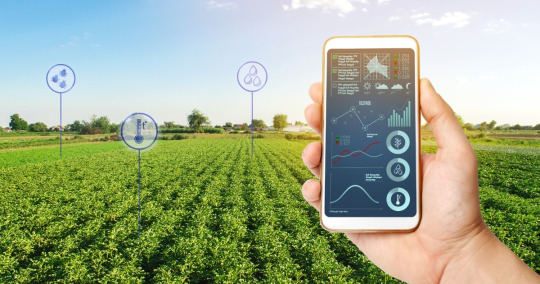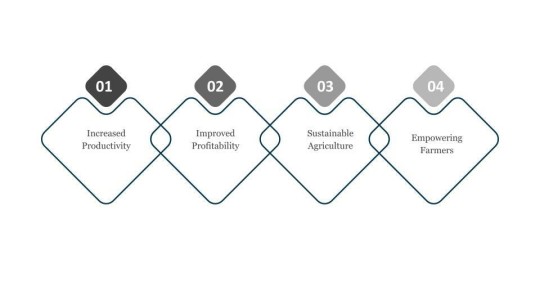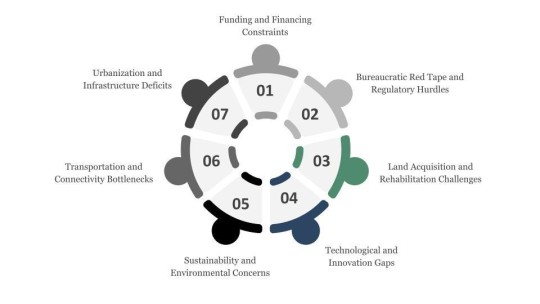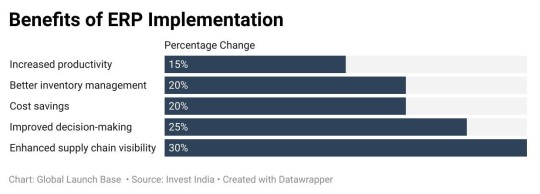#indianews
Text
A three-day grand Bhandara is being organized in commemoration of Sant Rampal Ji Maharaj Ji's 73rd incarnation day, from September 6th to 8th, 2023. The entire world is invited to this marvelous and extraordinary event.🙏🙇🌄🌸🌸✨🌌🌈🌈🌠🌠🌅⚡🤍🤍

#BhandaraInvitationToTheWorld
#kabir is real god#santrampaljimaharaj#guru#allahﷻ#allah is kabir#chennai#hyderabad#social media#tumbler#my post#mumbai#motivating quotes#maharashtra#islam#news#indianews#haryana#organization#event
11 notes
·
View notes
Text
Do you know?
SaintRampalJi has once again given a new light to the falling devotional level.
The devotees have once again turned the society towards the Holy Vedas, the Holy Gita and have revived the Hindu religion in true sense
#santrampaljimaharaj#indianews#news#social media#godkabir#shiva#shivling#bhagwad gita#hindu#hinduism#india
2 notes
·
View notes
Link
A day after the Punjab government declared that German extravagance vehicle producer BMW has chosen to set up an auto part fabricating plant in the express, the organization has denied taking any such choice.
15 notes
·
View notes
Text
youtube
400 ज़िले, 100 गांव और 400 दिन. हर दिन, एक नया ज़िला, नया शहर. हम आयेंगे आपके पास. बदलते भारत की, बदलती तस्वीर पर आपकी राय. बोले आप... सुने दुनिया हम आपको ले चलेंगे, उन शहरों में, कस्बों में, और गांव में, जहाँ सपने उपजते हैं. मंजिलें तैयार होती है. और खोज होती है, समाधान की. बोले आप... सुने दुनिया
3 notes
·
View notes
Text
For India-Pak World Cup Game, Ahmedabad Hotel Prices As High As ₹ 1 Lakh
Rates for the October 15 India-Pak match at the Narendra Modi stadium indicate that there may have been an unusual amount of demand, according to prices on several hotel booking websites.
While many rooms are already booked for that day, room rates have increased by over ten times.

Ahmedabad: Since the International Cricket Council (ICC) on Tuesday announced the dates for the ODI World Cup, showing that India and Pakistan would play in Ahmedabad on October 15, hotel room costs here have increased dramatically—nearly tenfold in some cases.
The steep increase in the accommodation rate for October 15, when the arch-rivals face off, may have been the result of extraordinary demand, according to rates on several hotel booking websites.
2 notes
·
View notes
Text

#child#crying#tension#homework#mom#video#viral#viral video#newsics#indianews#news#india#world#just gonna leave this here
4 notes
·
View notes
Text
youtube
स्टॉक मार्किट से जुड़े अपने सभी सवालों को हमारे Market Experts से LIVE SHOW में पूछने के लिए देखिये हमारा ख़ास Show MarketLIVE (सुबह के 10 बजे से) सिर्फ India News Business पर। आप किस शेयर के बारे में पूछना चाहते हैं? अगला वीडियो किस सेक्टर या सब्जेक्ट पर होना चाहिए? अपना सुझाव दें: https://forms.gle/1DJgN28fz1cnVGyE8 हमारे Channel का प्रयास है हर निवेशक को सही निवेश की राय देना। आज ही इस चैनल को Like और Subscribe करें। Follow us on: YouTube: / @indianewsbusiness Twitter: / indianewsbiz Facebook: / indianewsbusinessoff Official Website: https://indianewsbusiness.com/
0 notes
Text
Agriculture ERP's Role in Unlocking Growth
Written By: Jagriti Shahi

Introduction
India, with its vast and diverse agricultural landscape, has been embracing technological advancements to modernize its farming practices. One such pivotal development is the implementation of Agriculture Enterprise Resource Planning (ERP) infrastructure. This integrated system is designed to streamline and optimize various agricultural processes, from production and supply chain management to financial transactions and data analysis. In this article, we will explore the significance and impact of Agriculture ERP infrastructure in India. India, a country deeply rooted in its agricultural heritage, is on the cusp of a transformative journey in farming practices, driven by technological advancements. At the heart of this evolution is the implementation of Agriculture Enterprise Resource Planning (ERP) infrastructure. This integrated system is not merely a digital tool but a comprehensive solution designed to revolutionize every facet of the agricultural supply chain. From the intricacies of crop planning to the intricacies of financial transactions, ERP infrastructure is reshaping the landscape of Indian agriculture. In this article, we delve into the significance, features, and profound impact of Agriculture ERP infrastructure in propelling India towards a future of sustainable and technologically-empowered farming.

Figure: Indian Agriculture Market Size - 2019 - 2023
India's agricultural sector, a cornerstone of the nation's economy, is undergoing a digital transformation. At the heart of this change lies Agriculture Enterprise Resource Planning (ERP) systems. But how ready is the current infrastructure for widespread ERP adoption, and how can ERP companies prepare for the unique landscape of Indian agriculture?
The Current Landscape: A Patchwork of Potential
India's agricultural infrastructure presents a complex picture. While some regions boast modern facilities and tech-savvy farmers, others struggle with limited internet connectivity, fragmented land holdings, and a lack of digital literacy. This digital divide creates a challenge for widespread ERP implementation.
However, there are reasons for optimism. Government initiatives like Digital India and Krishi Megh (Farmers' Cloud) are promoting digital literacy and rural internet connectivity. Additionally, the rise of affordable smartphones and mobile apps is bridging the gap for many farmers.

Figure: Adoption Rate of Agriculture ERP Systems Over Time
This figure indicates the percentage of agricultural businesses in India that have adopted ERP systems during each corresponding year.

Figure: Forecasted Growth of Agriculture ERP Market
The Need for Agriculture ERP in India
India's agriculture sector has traditionally been characterized by small-scale farming practices, fragmented land holdings, and manual labor. The introduction of ERP systems aims to address several challenges faced by the agricultural community, such as inefficient resource utilization, lack of real-time data, and limited access to market information. By leveraging technology, the Agriculture ERP infrastructure seeks to enhance productivity, increase efficiency, and ultimately boost the income of farmers.
Key Features of Agriculture ERP in India
Crop Planning and Management: ERP systems enable farmers to plan and manage their crops effectively by providing real-time data on weather conditions, soil health, and market demand.
Crop management modules assist in optimizing planting schedules, crop rotations, and resource allocation, leading to improved yield and reduced wastage.
Supply Chain Integration: Seamless integration of the supply chain is a critical component of Agriculture ERP. It facilitates efficient coordination between farmers, suppliers, distributors, and retailers.
Real-time tracking of produce from farm to market ensures transparency, reduces wastage, and minimizes losses during transportation.
Financial Management: ERP infrastructure helps farmers manage their finances by providing tools for budgeting, expense tracking, and revenue forecasting.
Access to credit facilities and insurance options is enhanced, empowering farmers to make informed financial decisions and mitigate risks.
Market Intelligence: The ERP system gathers and analyzes market data, enabling farmers to make informed decisions based on current market trends and demand.
Access to market intelligence helps farmers negotiate better prices and explore new markets for their produce.
Data Analytics and Precision Farming: Data analytics tools incorporated in Agriculture ERP systems enable farmers to make data-driven decisions.
Precision farming techniques, aided by ERP infrastructure, allow for optimized resource utilization, leading to increased efficiency and reduced environmental impact.
Benefits and Impact
Increased Productivity: By providing farmers with timely and relevant information, Agriculture ERP infrastructure contributes to enhanced productivity through optimized crop planning and resource utilization.
Improved Profitability: Efficient supply chain management, access to market information, and financial planning tools contribute to increased profitability for farmers.
Sustainable Agriculture: Precision farming practices promoted by ERP systems promote sustainable agriculture by minimizing resource wastage and environmental impact.
Empowering Farmers: Agriculture ERP infrastructure empowers farmers by providing them with the tools and knowledge to make informed decisions, access financial resources, and navigate the market effectively.

Challenges and Future Prospects While Agriculture ERP infrastructure holds immense potential, challenges such as the digital divide, infrastructure limitations, and resistance to technology adoption must be addressed. The government, private sector, and agricultural communities need to collaborate to overcome these hurdles and ensure the widespread adoption and success of ERP systems in Indian agriculture.
In conclusion, the implementation of Agriculture ERP infrastructure in India represents a significant step towards modernizing the agricultural sector. By leveraging technology to enhance efficiency, productivity, and sustainability, these systems play a crucial role in transforming traditional farming practices and improving the livelihoods of millions of farmers across the country. As India continues on its path of agricultural development, the integration of ERP infrastructure will remain a key driver of positive change in the sector.
Challenges of India's Infrastructure Landscape
India, as one of the world's fastest-growing economies, faces a myriad of challenges in its infrastructure development. Despite significant progress in recent decades, the country grapples with persistent obstacles that hinder the efficient functioning and expansion of its infrastructure networks. Understanding these challenges is crucial for policymakers, investors, and stakeholders to devise effective strategies for addressing them and unlocking India's full growth potential.
1. Funding and Financing Constraints: One of the primary challenges facing Indian infrastructure development is the availability of funding and financing. Infrastructure projects often require substantial capital investment, and securing long-term financing on favorable terms remains a significant hurdle. Issues such as regulatory uncertainties, project delays, and high debt burdens deter both domestic and foreign investors, constraining the pace of infrastructure expansion.
2. Bureaucratic Red Tape and Regulatory Hurdles: India's bureaucratic processes and regulatory frameworks are often cited as major impediments to infrastructure development. Cumbersome approval processes, overlapping jurisdictional authorities, and complex legal requirements contribute to project delays and cost overruns. Streamlining regulatory procedures, enhancing transparency, and promoting ease of doing business are essential for expediting infrastructure projects and attracting investment.
3. Land Acquisition and Rehabilitation Challenges: Land acquisition remains a contentious issue in India, particularly for large-scale infrastructure projects. Conflicting land ownership claims, inadequate compensation mechanisms, and resistance from local communities pose significant hurdles to acquiring land for infrastructure development. Moreover, the displacement of people and disruption of livelihoods necessitate comprehensive rehabilitation and resettlement policies to mitigate social tensions and ensure equitable development outcomes.
4. Technological and Innovation Gaps: While India has made strides in adopting modern technologies and innovation in certain sectors, there remains a significant gap in infrastructure development. Outdated construction methods, inadequate use of digital technologies, and limited innovation in project design and execution hamper the efficiency and quality of infrastructure projects. Embracing emerging technologies such as artificial intelligence, blockchain, and Internet of Things (IoT) can enhance project management, optimize resource utilization, and improve infrastructure resilience.
5. Sustainability and Environmental Concerns: With rapid urbanization and industrialization, India faces mounting environmental challenges associated with infrastructure development. The depletion of natural resources, air and water pollution, and ecological degradation threaten both human well-being and ecosystem integrity. Balancing the imperative for infrastructure expansion with environmental sustainability requires integrating green infrastructure solutions, promoting renewable energy sources, and implementing stringent environmental regulations and standards.
6. Transportation and Connectivity Bottlenecks: Inadequate transportation infrastructure and connectivity remain significant barriers to India's economic growth and development. Congested roadways, insufficient public transportation systems, and underdeveloped rail and air networks impede the efficient movement of goods and people. Addressing transportation bottlenecks requires investments in road and rail infrastructure, last-mile connectivity solutions, and multimodal transportation hubs to enhance mobility and facilitate trade and commerce.
7. Urbanization and Infrastructure Deficits: India's rapid urbanization places immense pressure on urban infrastructure systems, exacerbating existing deficits in housing, water supply, sanitation, and public services. The proliferation of informal settlements, inadequate urban planning, and insufficient infrastructure investments contribute to urban sprawl, congestion, and social inequalities. Adopting integrated urban development strategies, promoting affordable housing initiatives, and investing in smart city infrastructure are imperative for creating sustainable and inclusive urban environments.

Addressing the multifaceted challenges of India's infrastructure landscape requires concerted efforts from government agencies, private sector entities, civil society organizations, and other stakeholders. Embracing innovation, fostering public-private partnerships, streamlining regulatory processes, and prioritizing sustainability are essential for overcoming barriers to infrastructure development and unlocking India's vast growth potential. By addressing these challenges holistically and collaboratively, India can build resilient, inclusive, and sustainable infrastructure networks that propel the nation towards a prosperous future.
Are Indian Farmers ready for using ERP?
The readiness of Indian farmers to adopt Enterprise Resource Planning (ERP) systems varies based on several factors, including technological literacy, access to resources, and awareness of the benefits of digital solutions. While some farmers may be ready and willing to embrace ERP technology, others may face significant barriers to adoption. Let's explore both perspectives:

Figure: Benefits of ERP Implementation
Reasons for Optimism:
Government Initiatives: Digital India and Krishi Megh are bridging the digital divide and promoting rural internet access and digital literacy.
Mobile Revolution: Affordable smartphones and mobile apps are making information and tools more accessible to farmers.
Early Adopters: Progressive farmers are already reaping the benefits of ERP, demonstrating its potential.
The Reality:
Indian farmers are at various stages of ERP readiness. Large-scale, tech-savvy farms are prime candidates, while smaller farms might require more accessible and affordable solutions.
Factors Contributing to Readiness
Technological Awareness: Many Indian farmers, particularly those in regions with better access to information and communication technologies (ICTs), are increasingly familiar with digital tools and platforms. They may already use mobile applications for accessing weather forecasts, market prices, and agricultural information, indicating a level of readiness for more advanced technological solutions like ERP.
Education and Training: Farmers who have received formal education or vocational training in agriculture and allied fields are more likely to understand the benefits of ERP systems and possess the necessary skills to operate them effectively. Training programs conducted by government agencies, NGOs, and private organizations can enhance farmers' readiness by imparting knowledge about ERP functionalities and best practices.
Access to Connectivity: The availability of reliable internet connectivity, particularly in rural areas, is crucial for the successful adoption of ERP systems. With the increasing penetration of mobile networks and initiatives like BharatNet aimed at expanding broadband connectivity to rural India, farmers have greater access to online resources and digital platforms, laying the foundation for ERP adoption.
Market Integration: Farmers engaged in commercial agriculture and value-added activities are more likely to recognize the importance of efficient management practices and technology-driven solutions for enhancing productivity and profitability. ERP systems offer features such as supply chain management, market analysis, and financial tracking, which can benefit farmers seeking to optimize their operations and access broader markets.

Challenges to Adoption:
Cost and Affordability: ERP implementation involves upfront costs for software licenses, hardware infrastructure, and training, which may be prohibitive for smallholder farmers with limited financial resources. While government subsidies or financing schemes can alleviate some of the financial burden, affordability remains a significant barrier to adoption for many farmers.
Complexity and Technical Support: ERP systems are sophisticated software solutions that require technical expertise for installation, customization, and maintenance. Many farmers, especially those with limited formal education or digital literacy, may find ERP interfaces complex and challenging to navigate without adequate technical support and guidance.
Infrastructure and Connectivity: In rural areas with poor infrastructure and limited internet connectivity, accessing and using ERP systems may be impractical or unreliable. Even with the increasing availability of mobile internet services, connectivity issues persist in remote agricultural regions, hindering farmers' ability to leverage cloud-based ERP solutions effectively.
Cultural and Behavioral Factors: Farmers' attitudes towards technology and traditional farming practices can influence their readiness to adopt ERP systems. Resistance to change, skepticism about the benefits of digitalization, and reliance on customary farming methods may impede the uptake of ERP technology, particularly among older or more conservative farmers.

ERP Companies: Cultivating Solutions for Indian Needs
ERP companies can play a crucial role in accelerating ERP adoption in Indian agriculture. Here's how:
Localization is Key: Develop user interfaces and functionalities in local languages for better accessibility.
Mobile-First Approach: Prioritize mobile app development for real-time data access and on-field management.
Offline Functionality: ERP systems should function even in areas with limited internet connectivity.
Scalability and Affordability: Offer modular solutions with varying functionalities to cater to different farm sizes and budgets.
Partnerships: Collaborate with government agencies, NGOs, and agricultural institutions to promote digital literacy and build trust in ERP technology.
The Road Ahead: A Symbiotic Future
The future of Indian agriculture is one where ERP systems seamlessly integrate with a developing infrastructure. By embracing localization, mobility, and affordability, ERP companies can empower Indian farmers to make data-driven decisions, improve efficiency, and navigate the path towards a more sustainable and profitable future.
This collaborative effort between the government, ERP companies, and farmers has the potential to revolutionize Indian agriculture, ensuring food security for a growing nation and economic prosperity for its rural population.
How companies can expand in India’s unique ERP infrastructure landscape:
Understanding the Infrastructure:
Research and Analysis: Conduct in-depth research on the current state of internet connectivity, digital literacy levels, and farm sizes across different regions of India. Partner with local agricultural institutions or consulting firms to gain insights.
Focus on Regions: Identify regions with better digital infrastructure and higher tech adoption among farmers. This can help prioritize initial market entry and solution development.
Tailoring Your ERP Approach:
Localization is Paramount: Develop user interfaces and training materials in local languages to overcome language barriers and improve accessibility.
Mobile-First Development: Prioritize building mobile applications for your ERP system. This caters to the growing smartphone usage among farmers and allows for real-time data access and on-field management.
Offline Functionality: Ensure your ERP system functions even in areas with limited internet connectivity. This could involve data caching or offline modules for core functionalities.
Modular and Scalable Solutions: Offer various service tiers within your ERP system. This allows farmers with smaller land holdings or lower budgets to access basic functionalities, with the option to upgrade as their needs evolve.
Partnerships are Key: Collaborate with Indian companies or organizations. This can include:Technology Providers: Partnering with local IT firms can help integrate your ERP with existing agricultural platforms or government initiatives.Agricultural Institutions: Collaborate with agricultural universities or research bodies to offer training programs and build trust in your ERP technology among farmers.Non-Governmental Organizations (NGOs): Partnering with NGOs can help reach smallholder farmers and integrate them into the digital agricultural ecosystem.
Additional Considerations:
Data Privacy and Security: Ensure your ERP system complies with Indian data privacy regulations to build trust with farmers.
Focus on Value Addition: Go beyond basic functionalities. Highlight how your ERP system offers unique value propositions like improved yield management, market access, or financial planning tools.
By understanding the evolving infrastructure and tailoring your ERP solutions, foreign companies can position themselves for success in the Indian agricultural market. Remember, collaboration with local players and a focus on user-friendliness will be crucial for long-term growth.
About Global Launch Base:
Global Launch Base helps international startups expand in India. Our services include market research, validation through surveys, developing a network, building partnerships, fundraising, and strategy revenue growth. Get in touch to learn more about us.
Contact Info:
Website: www.globallaunchbase.com
LinkedIn: https://www.linkedin.com/company/globallaunchbase/
Email: [email protected]
#AgricultureERP hashtag#IndianAgricultureTechnology#hashtag#FarmManagementSoftware hashtag#AgriculturalDigitization#ERPSolutionsForFarmers hashtag#IndianAgriculturalInnovation#DigitalTransformationInFarming hashtag#AgriculturalSoftwareSolutions#ERPImplementationInAgriculture hashtag#AgriTechAdvancementsInIndia hashtag#indianfarmers hashtag#indianfarmer hashtag#india hashtag#erp hashtag#agriculture hashtag#indianews
0 notes
Text
youtube
Rahul Gandhi- जब भरी सभा में राहुल गांधी ने लगाया मोदी को गले ! Lok Sabha Elections 2024
In this video, #Rahul Gandhi hugs #Modi in the parliament. And everyone was so amazed by his gesture. Watch this video to know how #BJP reacts on this hug.
0 notes
Text
S. Jaishankar: A Beacon of Strategic Leadership in Global Diplomacy

In the intricate realm of international diplomacy, where nations converge for negotiation and collaboration, one name stands out with unparalleled brilliance — S. Jaishankar. As India’s Minister of External Affairs since 2019, Jaishankar continues to craft a compelling narrative that intertwines strategic leadership, intellectual prowess, and unwavering dedication to the nation. Succeeding Sushma Swaraj, he is the 30th minister to assume this pivotal role.
Jaishankar’s literary contribution, “The India Way: Strategies for an Uncertain World,” delves into the substantial reshaping of the global order from the 2008 global financial crisis to the 2020 coronavirus pandemic.
At the 78th United Nations General Assembly (UNGA), Jaishankar’s address commenced with a warm “Namaste from Bharat.” Reflecting on the success of the G20 summit, he positioned India as a solution provider bridging divides and emphasized the nation’s “One Earth, One Family, One Future” vision.
Unveiling Unknown Facts about S. Jaishankar:
Jaishankar, whose rank in the UPSC led him to the Indian Foreign Service in 1977, boasts over three decades of diplomatic experience.
He served as the longest-serving Indian Ambassador to China, playing a pivotal role in strengthening economic, trade, and cultural ties between India and China.
Widely regarded as one of the world’s best diplomats, Jaishankar is particularly popular among the youth for his witty and diplomatic responses that consistently advocate for India’s interests in global politics.
He was previously married to Ms. Shobha, whom he met while studying at JNU, until her unfortunate battle with cancer. His current wife, Kyoko, is Japanese, and the couple has two sons and a daughter.
Inducted into PM Modi’s cabinet in 2019, Jaishankar is entrusted by the Prime Minister for critical diplomatic missions.
Jaishankar’s linguistic prowess extends to Tamil, Russian, conversational Japanese, and some Hungarian.
In a series of popular interviews, including the Global Technology Summit 2021, The Sydney Dialogue Panel discussion on “Democracies and Global Technology Governance,” and the India Today Conclave 2021, Jaishankar has shared his insights.
Examining his illustrious career trajectory:
1977: Indian Foreign Service
2001–04: Ambassador to Czechia (Czech Republic)
2007–09: High Commissioner to Singapore
2009–13: Ambassador to China
2014–15: Ambassador to the US
2015–18: Foreign Secretary of India
2019-present: Minister of External Affairs of India
Highlighting Achievements and Contributions:
Enhanced Bilateral Relations: Jaishankar played a pivotal role in strengthening India’s ties with major powers like the United States, Russia, and China, fostering economic cooperation, strategic partnerships, and diplomatic collaboration.
COVID-19 Diplomacy: Leading India’s efforts during the pandemic, Jaishankar initiated the “Vaccine Maitri” initiative, showcasing India’s commitment to global public health.
Boundary Resolution: Significant progress in resolving longstanding border disputes, particularly with China, was achieved under Jaishankar’s leadership through dialogue and negotiation.
Climate Diplomacy: An advocate for climate action, Jaishankar represented India’s interests in international forums, underscoring the country’s commitment to renewable energy and sustainability.
As India asserts its role on the global stage, S. Jaishankar stands as a steadfast leader, navigating the intricacies of international diplomacy. His adeptness in fostering alliances, addressing challenges head-on, and navigating complex international relationships has not only fortified India’s position but has also contributed to a more stable and interconnected world, ensuring a brighter future on the global stage.
0 notes
Text
PM Modi Extends Warm Wishes to Former PM Manmohan Singh on His 91st Birthday
Prime Minister Narendra Modi took a moment on Tuesday to convey his heartfelt greetings to his predecessor, Dr. Manmohan Singh, on the occasion of the former Prime Minister's 91st birthday. This gesture highlights the significance of bipartisan camaraderie and respect in Indian politics.
Dr. Manmohan Singh, born in 1932 in what is now part of Pakistan, served as India's Prime Minister from 2004 to 2014. His tenure was marked by significant economic reforms that helped transform India's economy. During his time as Finance Minister in the government led by Prime Minister P V Narasimha Rao from 1991 to 1996, Dr. Singh played a pivotal role in initiating economic reforms that departed from the constraints of socialist-era policies.
In a message shared on social media platform X, Prime Minister Modi conveyed his best wishes, saying, "Birthday wishes to former PM Dr. Manmohan Singh Ji. I pray for his long life and good health." This message reflects the spirit of unity and respect across party lines, acknowledging Dr. Singh's contributions to the nation.
Dr. Manmohan Singh remains an influential figure in Indian politics, and his wisdom and experience continue to guide the nation's leaders. Despite health challenges, he remains an active member of the Rajya Sabha, where he contributes to discussions on various important matters.
This gracious birthday wish from Prime Minister Modi underscores the importance of celebrating the achievements and service of leaders from all political backgrounds. It serves as a reminder of the shared goal of working towards the betterment of India, transcending political affiliations.
As the nation wishes Dr. Manmohan Singh a happy 91st birthday, his legacy as an eminent economist and statesman continues to inspire and shape the future of India. The camaraderie between leaders from different political spectrums reflects the strength of India's democratic values and traditions.
Read More Latest India News only on Republic World
Republic World is a dynamic and most trusted source of news and information, founded by journalist and entrepreneur Arnab Goswami. We cater live and in-depth coverage of comprehensive news headlines and articles, covering a wide range of topics including India news, entertainment news, sports news and much more. Republic World features breaking news in India, current news headlines, India news live and today's India News.
0 notes
Text
"Inside Bharat News: Your Source for Trending, Latest, Sports, and Political News!"
Welcome to Inside Bharat News, your one-stop destination for the most up-to-date and Latest news in India. Our dedicated team of journalists works tirelessly to bring you the latest happenings across the nation. From trending stories that capture the pulse of the nation to the freshest updates in sports and the intricate world of politics, we've got it all covered. Stay informed and engaged with our comprehensive coverage, exclusive interviews, and in-depth analysis. Inside Bharat News is your trusted source to stay ahead of the curve and stay informed about the issues that matter most to you.

#TrendingNews#LatestNews#BreakingNews#InDepthAnalysis#PoliticalUpdates#SportsHeadlines#TopStories#BharatNews#CurrentAffairs#NationalNews#NewsAlert#Journalism#NewsCoverage#IndiaNews#ElectionUpdates#SportsAnalysis#PoliticalInsights#NewsNow#DailyNews#StayInformed#InsideBharatNews
0 notes
Video
youtube
(via Sharing The News First-Your Site Name)
0 notes